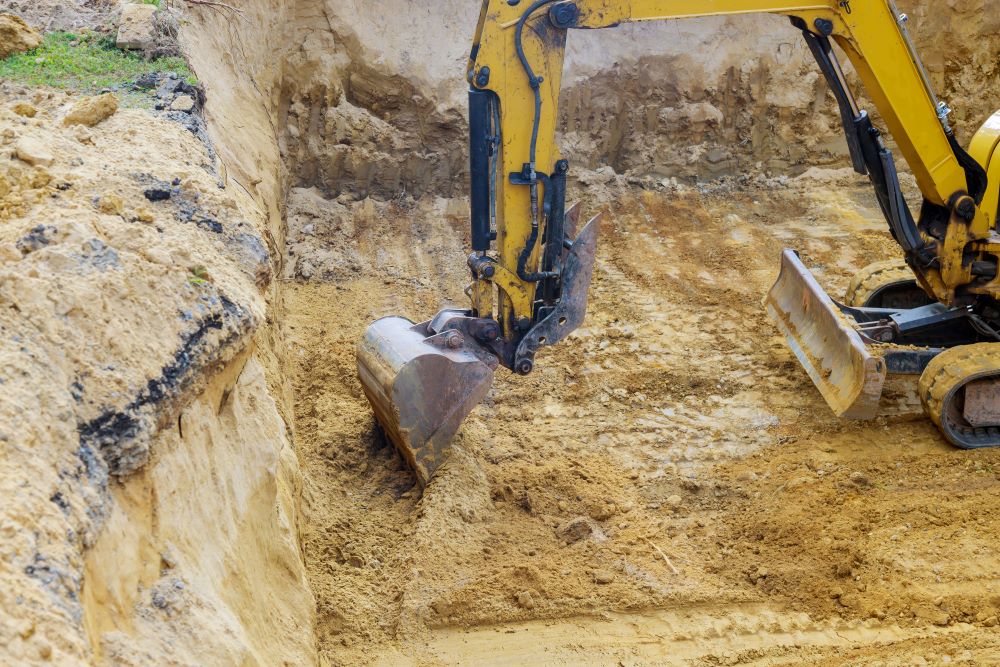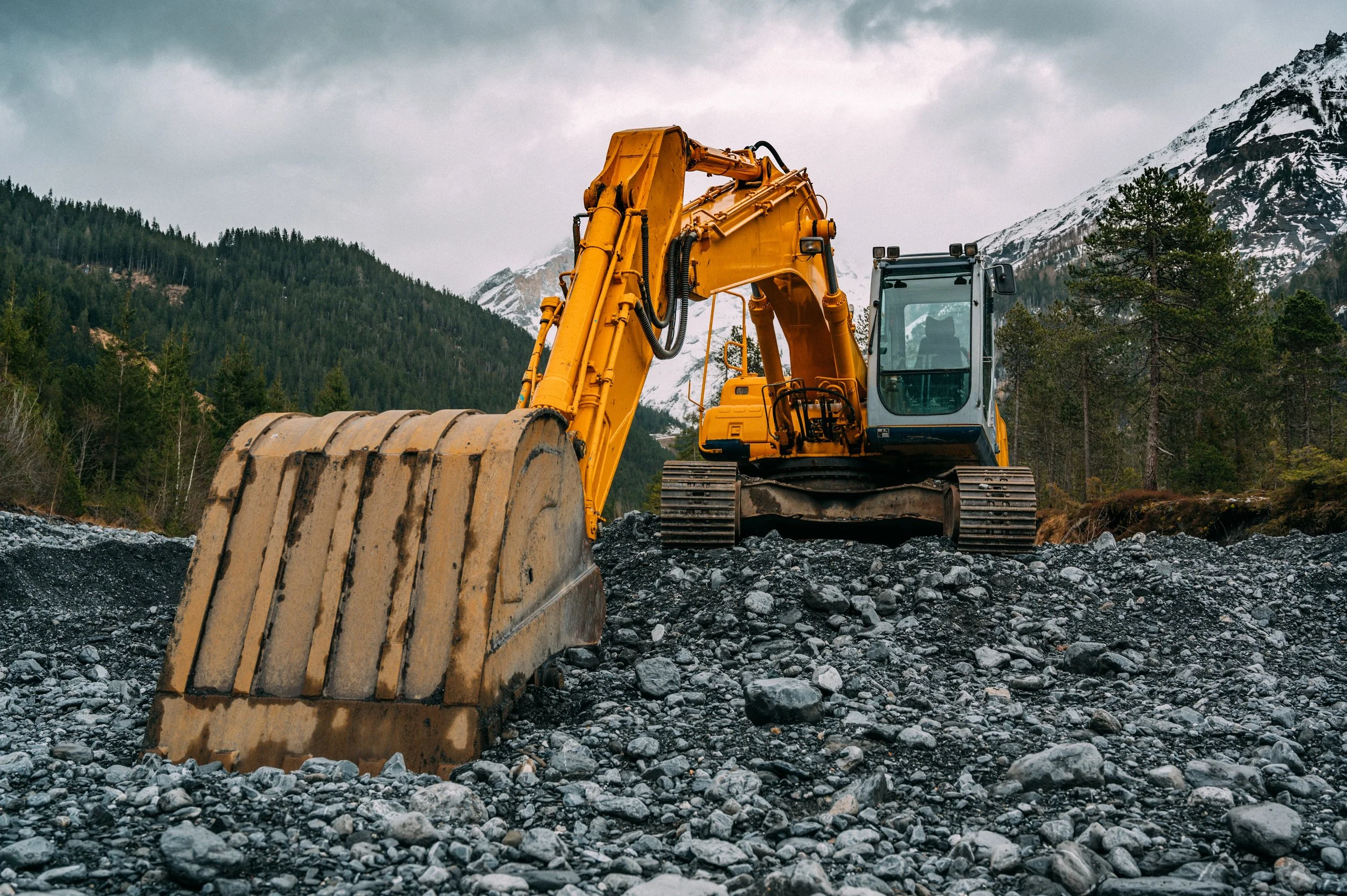Innovative Excavation Techniques for a Seamless and Successful Building Refine
In the world of construction, the performance of excavation plays an essential function in identifying the total success of a job. As modern technology proceeds to development, innovative excavation techniques have arised, promising a smooth and efficient building and construction procedure.
Advanced Excavation Equipment
Advanced excavation machinery plays a pivotal function in improving performance and performance during construction jobs. These state-of-the-art equipments are designed to tackle a variety of tasks, from digging trenches and structures to moving huge quantities of planet promptly and effectively (Excavation Guilford CT). By using advanced excavation machinery, construction business can substantially lower the time and labor required for project conclusion, ultimately resulting in set you back financial savings and enhanced project timelines
Excavators equipped with GPS technology enable for precise excavating and grading, ensuring that jobs are completed with accuracy and marginal rework. In addition, making use of hydraulic systems in modern-day excavation equipment improves control and power, making it possible for operators to deal with heavy tons easily. This not only boosts efficiency however likewise advertises a safer working environment for construction crews.

Robotics in Excavation
The unification of robotics in excavation processes represents an innovative development that better transforms building and construction efficiency beyond the world of sophisticated excavation equipment. Robotics in excavation involves using automated or remote-controlled makers geared up with sensing units, cameras, and advanced software program to execute various jobs with precision and speed. These robotic systems can browse intricate terrains, run in hazardous settings, and carry out excavation jobs with high accuracy, lowering human error and improving safety and security on construction websites.
One of the key benefits of using robotics in excavation is the ability to accessibility hard-to-reach locations that might be testing for traditional equipment or manual work. Additionally, robotic excavators can work around the clock, increasing efficiency and increasing task timelines. By leveraging expert system and machine knowing formulas, these robotic systems can enhance excavation processes, reduce material waste, and simplify building and construction procedures. As modern technology proceeds to development, the assimilation of robotics in excavation is positioned to improve the building industry, offering unprecedented levels of accuracy, cost-effectiveness, and effectiveness.
3D Printing for Digging
Incorporating 3D printing innovation in excavation procedures introduces an unique method to boosting building and construction effectiveness and precision. This innovative technology allows the creation of detailed designs and frameworks that typical excavation techniques might struggle to attain. By utilizing 3D printing for digging, building and construction teams can produce personalized parts, molds, and even whole parts with unprecedented precision.
Among the primary advantages of utilizing 3D printing for excavation is the ability to simplify the building process by lowering manual labor and building time. Traditional excavation techniques often involve substantial manual work for shaping and sculpting products, which can be labor-intensive and time-consuming. With 3D printing, elaborate styles can be equated directly into physical structures with very little hands-on intervention, bring about faster job completion.
Additionally, 3D printing enables better accuracy in excavation, ensuring that frameworks are developed according to precise specifications. This level of accuracy can reduce errors and revamp, ultimately resulting in set you back financial savings and a more seamless building and construction procedure. By using the power of 3D printing for excavating, construction projects can take advantage of raised performance, improved accuracy, and ultimately, a streamlined and effective building process.

Drone Innovation for Site Surveys
Utilizing contemporary technical innovations past 3D printing, the assimilation of drone modern technology for website surveys transforms the performance and precision of construction planning and implementation. Drones geared up with high-resolution cameras and progressed sensors can quickly record comprehensive airborne images of building sites, providing real-time data that enhances decision-making procedures. By performing aerial studies, drones offer an extensive review of the site, permitting building and construction groups to recognize possible difficulties, screen progress, and make enlightened modifications to the project timeline.
In addition, the information gathered by drones can be refined making use of specialized software to produce accurate 3D versions and maps, enabling building and construction professionals to envision the site in a much more specific and detailed fashion. In general, the combination of drone innovation for site surveys stands for a substantial advancement in modern-day construction methods, improving procedures and enhancing general job end results.
Online Truth Simulation Advantages
Online truth simulations offer unmatched immersive experiences that transform the means building tasks are intended and carried out. By simulating link real-world environments, these technologies provide construction find teams with a virtual platform to envision and connect with recommended excavation plans before beginning. This visual depiction permits an extensive understanding of the website, making it possible for stakeholders to identify prospective obstacles, optimize operations, and boost safety actions.

Moreover, virtual reality simulations enhance partnership amongst job stakeholders by supplying a common platform for conversations and decision-making. With the capacity to go through the digital site with each other, teams can interact better, cultivating positioning and inevitably causing a more effective and smooth construction procedure.
Conclusion
In conclusion, the use of innovative excavation machinery, robotics, 3D printing, drone innovation, and digital reality simulation in construction tasks has verified to be extremely valuable. These cutting-edge approaches have structured the excavation process, internet enhanced efficiency, and improved safety on building websites. By incorporating these technologies right into construction jobs, companies can ensure a smooth and successful building and construction process from start to finish.
The consolidation of robotics in excavation procedures stands for an advanced development that further changes building performance beyond the realm of sophisticated excavation machinery.Incorporating 3D printing technology in excavation procedures introduces a novel method to improving building effectiveness and precision.One of the key advantages of utilizing 3D printing for excavation is the ability to simplify the building process by reducing hand-operated labor and construction time. By using the power of 3D printing for digging, building jobs can benefit from increased performance, enhanced precision, and inevitably, a structured and successful building and construction process.
By integrating these modern technologies into building and construction tasks, firms can guarantee a successful and smooth construction process from begin to finish.
Procedure))))